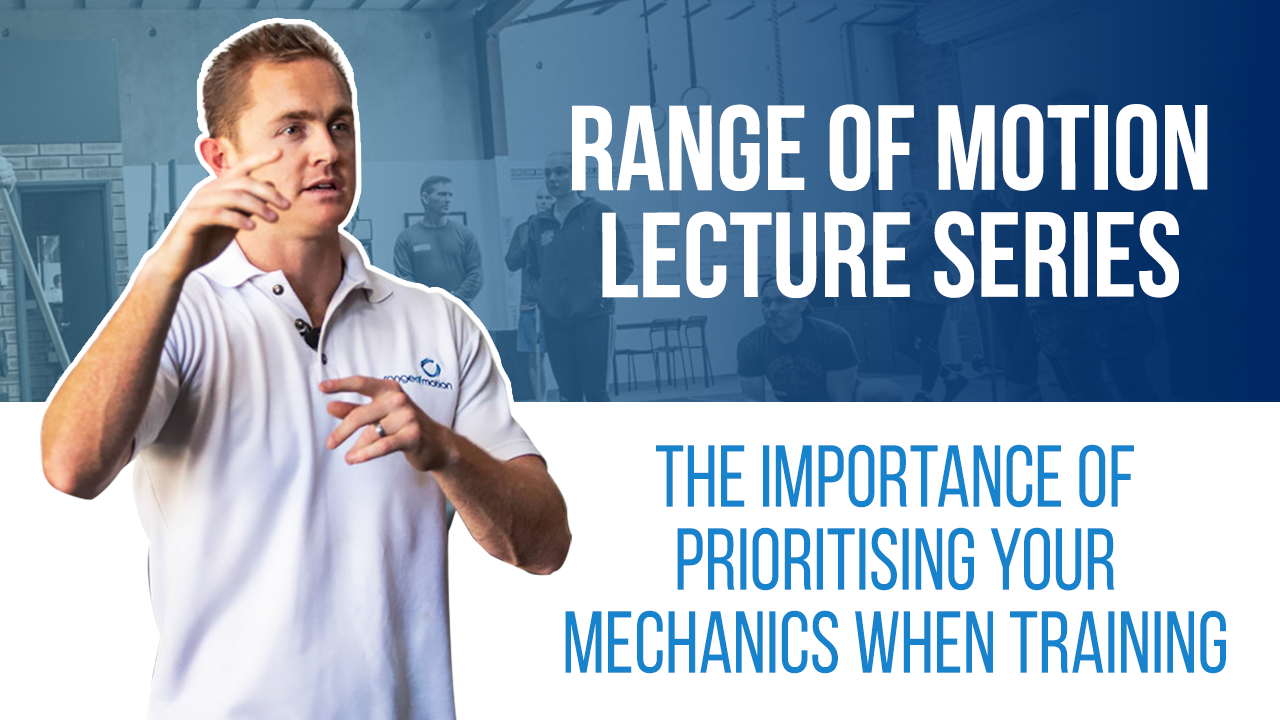Transcribed from video:
– In training, a couple of strategies. Firstly, prioritise mechanics. What’s the best way to get better at squatting well? Squat well, yeah, yeah? Carryover, things we talked about yesterday. If you have faulty movement patterns, it increases your risk of injury, so we want to avoid these faulty movement patterns. Movement patterns that are good, good being an arbitrary term, but movement patterns that are good are safer, they’re faster, they’re more efficient, they’re more powerful, they’re less painful. These aren’t separate circles here where, this is an efficient squat, this is a fast squat, this is a strong squat, and … It’s all the same thing. Fast is strong, is efficient, is safe. So, you see the top athletes, they move well. Yeah, they move really well. That’s good, safe technique. But they’re also doing it because it’s the most efficient way for them to win the race. They’re the same positions. Good technique from a performance point of view is identical to good technique from a health point of view. Or it should be. If your movement is good, you’re putting less damage on your body, therefore there’s less bad to recover from. If you don’t have to recover as much, then you can push those bouts of training closer together again. Something that you guys should really implement into your training, and this is a good practical takeaway, is have points of performance as to what constitutes a good rep, not based on the completion of a movement, because of an arbitrary start and endpoint, but because of the quality of the movement. So again, let’s look at something like a squat. What is the start point of a squat? Standing hips and knees open. What’s the midpoint? Hip crease below the knee. What’s the endpoint? Back to where you started. Now that’s important when you’re using this as a competition, as competitive exercising, but it doesn’t give any indication as to what happens between these points. We talked about the bar muscle up yesterday. You start here, you end here, but can you see how much difference there is in what happens between? So, in training, set quality criteria. And I will say to my athletes or people as I’m working with them, “Here’s the session we’re doing. “This is your training session. “These three points must be met on every power clean. “These three points must be met on every muscle up. “And if you don’t meet those points, “not the start and endpoints, but what happens in between, “the process, those reps do not count.” And it’s like a technique no rep. Can you imagine if we did that? If you were coaching someone and you said, “Well, either you do this well or it doesn’t count.” We’re inherently lazy, we’ve evolved to be lazy. You’re not going to keep doing bad technique, if “no rep, no rep, no rep.” You’re going to fix it. Because in the long run, that becomes a more efficient way for you to get to where you’re trying to get to. So try and incorporate this concept of technique no reps into your training. You don’t have to do it for long. It will completely change your movement patterns. A couple of weeks of that, and you will just move very, very differently. Now, of course, for this to work, you have to be disciplined. Again, it’s hard to say, “Well, that’s a good rep, “and that’s not.” Because it’s not black and white like that. So you need to be disciplined. And say I like to round my back a little bit when I’m doing touch-and-go dead lifts. No, it’s got to be locked in. It may slow me down today, but it’s going to speed me up next month, because of the training I’m doing for me to be able to get there. If you’ve got someone who’s not able to be super disciplined with that, so let’s say someone is doing air squats, and they’re collapsing forward a lot, modify the environment to put them in a situation where they have no choice. Take the need for discipline out of the equation, by having them do their air squats facing a wall, and say, “Well, your arms must be straight. “Your thumbs must be locked together. “You must do full depth, and you’re not allowed “to touch the wall.” So they’re up against the wall, it forces them to stay vertical. You don’t have to be disciplined then, ’cause if you’re not, you’re going to break your nose on the wall. Modify the environment to put you in a situation where you can prioritise your mechanics. Summary: Set quality criteria for every training movement before each session.





